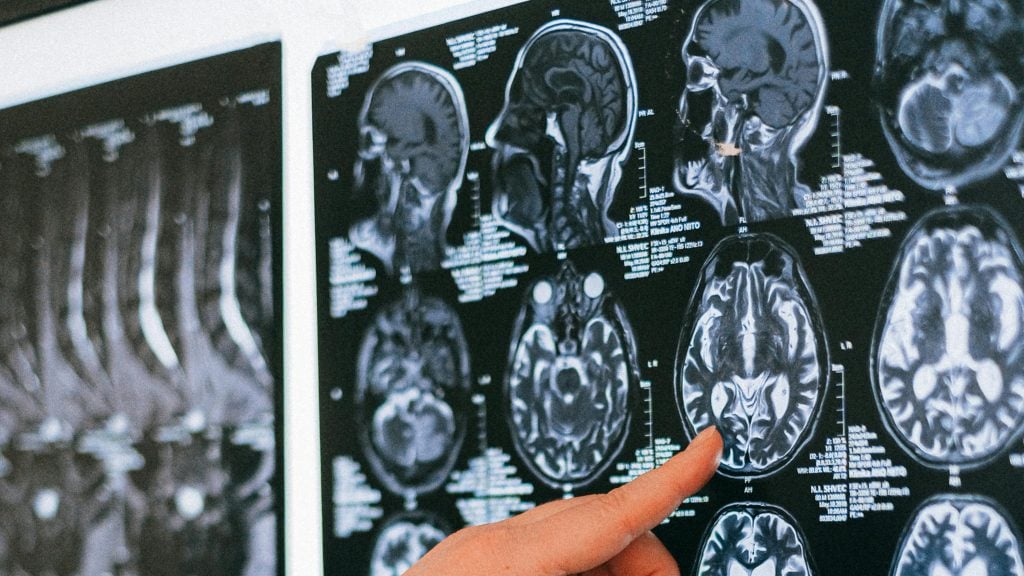
Insights from MDPI Top Picks – July 2024
This month’s Top Picks address current research highlights and trending topics in the world of healthcare, chemistry, mineralogy and electronics. Here, we see novel approaches in reviewing Casgevy therapy as an effective treatment for sickle cell disease and beta-thalassemia. We also look at a comprehensive review of the use of artificial intelligence and machine learning-enabled devices in healthcare. Another Top Pick article looks at how mineral samples could tell us more about life on Mars. Finally, we look at the latest progress in the development of 2D sensors, and how they are applied to things like wearable healthcare technologies.
Original Article: Phosphates on Mars and Their Importance as Igneous, Aqueous, and Astrobiological Indicators
Published in Minerals

A feature paper published in Minerals explores the different phosphates on Mars and what they can tell us about the history of the planet. Phosphate is an essential building block molecule used in processes such as energy storage. It’s also an important structural base of RNA and DNA. Therefore, phosphates are an important indicator of present or past life.
The review analyses the current literature on phosphate sampling from Martian phosphate minerals collected during spacecraft missions to Mars. Here, the authors provide a comprehensive review of the mineral samples, analysing different aspects of the phosphates. This includes their role as ‘aqueous indicators, including leaching, sorption, and formation of secondary phases; and the astrobiolological implications of phosphate.’
They conclude that phosphate minerals from Mars are ‘crucial igneous indicators, preserving the volatile contents of magmas and their source regions.’ The authors also state how they are very important biological indicators, used as ‘biosignatures.’ This points to the ‘biological past of that planet.’
Review: Regulatory Assessment of Casgevy for the Treatment of Transfusion-Dependent beta-Thalassemia and Sickle Cell Disease with Recurrent Vaso-Occlusive Crises
Published in Current Issues in Molecular Biology
Sickle cell disease (SCD) and transfusion-dependent beta-thalassemia (TDT) are inherited blood disorders that increase susceptibility to infection and other diseases. This is due to the presence of dysfunctional beta-globin chains within the molecule, resulting in a ‘mutated form of haemaglobin (Hb)’, which cannot bind to oxygen as well as normal Hb.
The review was carried out by the Medicine and Healthcare Products Regulatory Agency (MHRA) and published in Current Issues in Molecular Biology. The authors describe the pathogenesis of SCD and TDT. Furthermore, they assess the use of Casgevy (exagamglogene autotemecel) for the treatment of the two diseases in patients that have vaso-occlusion. This is a term to describe blood vessel obstruction due to sickled red blood cells that can often be fatal.
Casgevy is a type of gene therapy that involves using the gene-editing tool CRISPR on stem cells taken from a patient to produce functional fetal Hb cells, which have a higher affinity to oxygen than adult Hb.
The assessment includes consideration of the efficacy and safety of the treatment through the evaluation of preclinical and clinical data, clinical pharmacology and statistical evaluation. The review concluded that ‘following careful evaluation of the evidence, the benefits of Casgevy for the treatment of SCD or TDT were deemed to outweigh the risks. Casgevy has therefore been licensed for the treatment of SCD or TDT in patients 12 years of age and older.’
We asked Dr. Kerwash, an author of the paper, about the importance of their research:
‘Casgevy was the first agent utilising CRISPR/Cas9 technology to receive regulatory approval for the treatment of Transfusion-Dependent β-Thalassemia and Sickle Cell Disease with Recurrent Vaso-Occlusive Crise. The current manuscript describes novel approaches in reviewing the non-clinical, clinical pharmacology and clinical data of Casgevy and how these data were used to support the proof-of-concept and to deliver evidence on the efficacy and safety of this novel agent.’
Further, the MHRA approval for the therapy has also been described as ‘a revolutionary advance in the history of science.’
Original Article: FDA-Approved Artificial Intelligence and Machine Learning (AI/ML)-Enabled Medical Devices: An Updated Landscape
Published in Electronics

Artificial Intelligence (AI) has advanced exponentially in the last few years. It is being used in many different aspects of healthcare, from diagnostics and the planning of treatment programs to robotic surgery.
In an Editor’s Choice paper published in Electronics, the authors collected data on 691 FDA-approved AI and machine learning (ML)-enabled medical devices in healthcare within the US and the associated regulation type, clearance pathway, approval timeline, medical speciality and other aspects of its approval. The review also addresses the current landscape of using AI/ML devices in different fields of healthcare, current developments and future trends.
They find that AI/ML-enabled medical devices are predominantly used within the field of radiology. The technology is used to analyse images obtained from MRI and CT scans. You can read more about the use of AI in detecting brain tumors here.
The predominant usage of the devices in radiology is due to the routine clinical assessments that are commonly prescribed to patients. The authors of the review state how ‘these data reserves are invaluable, facilitating extensive research initiatives for scientists and providing a robust foundation for device manufacturers to innovate and enhance medical devices.’
The authors state that trends in AI/ML-enabled medical device usage suggest a ‘potential shortfall in the sphere of medical specialties targeting pediatric and young adult demographics.’ They explain that this may be due to difficulties in developing the devices or their lack of inclusion in clinical trials.
Further, the article urges the development of medical devices in clinical trials outside of the US and from other underrepresented demographics to further ‘address disparities.’ The authors conclude:
‘AI can transform the healthcare industry… (enhancing) the experiences of healthcare professionals and patients by reducing health disparities, achieving relevant outcomes, optimizing resources, and ensuring transparent and comprehensible AI decisions through explainable AI.’
Click here to read more about the application of AI in healthcare.
Review: Recent Progress in Multifunctional Gas Sensors Based on 2D Materials
Published in Chemosensors
A review published in Chemosensors provides a run-down of the latest progress on the development of gas sensors using two-dimensional (2D) materials. The article explores the application of different materials in the development of different types of sensors, including those used for healthcare. Further, we look at how the use of artificial intelligence (AI) and machine learning (ML) can contribute to the advancement of gas sensor technology. Gas sensor technology advancement is highly relevant in the face of current issues surrounding climate change and the reduction in air quality of the environment.
The article explains how 2D material is optimal for gas sensing due to its large surface area‒volume ratio. Materials such as graphene and its derivatives, transition metal dichalcogenides (TMDs) and MXenes are explored. They dive into their structural chemistry and how they serve as good materials for gas sensors.
Due to its chemical structure, multi-functional graphene was found to be used in a diverse range of sensors. This includes those that detect temperature, UV, humidity, carbon monoxide and nitrogen oxides. The ability to detect these components enables these sensors to be used in many different settings, including healthcare.
Interestingly, they see how these MXene-based sensors are applied to different types of sensors, particularly wearable healthcare sensors. These include those involved in the enhancement of wound healing, thermotherapy and breath monitoring.
The authors state:
‘The development of gas sensors is of great importance for monitoring exhaled breath, bodily fluids, and humidity, which makes it useful in early disease diagnosis and further treatment. Therefore, MXene-based gas sensors for healthcare are now receiving a great amount of attention.’
The application of AI and deep learning provides an excellent avenue for sensor technology, as they can predict physical and chemical interactions between materials. This exciting technology may accelerate the process of developing sensors in the future.
To read more about the exciting open-access research published by MDPI, click here to see a full list of journals.











This is a fantastic piece! Your thorough research and engaging writing style make it a must-read for anyone interested in the topic. I appreciate the practical tips and examples you included. Thank you for sharing such valuable insights.